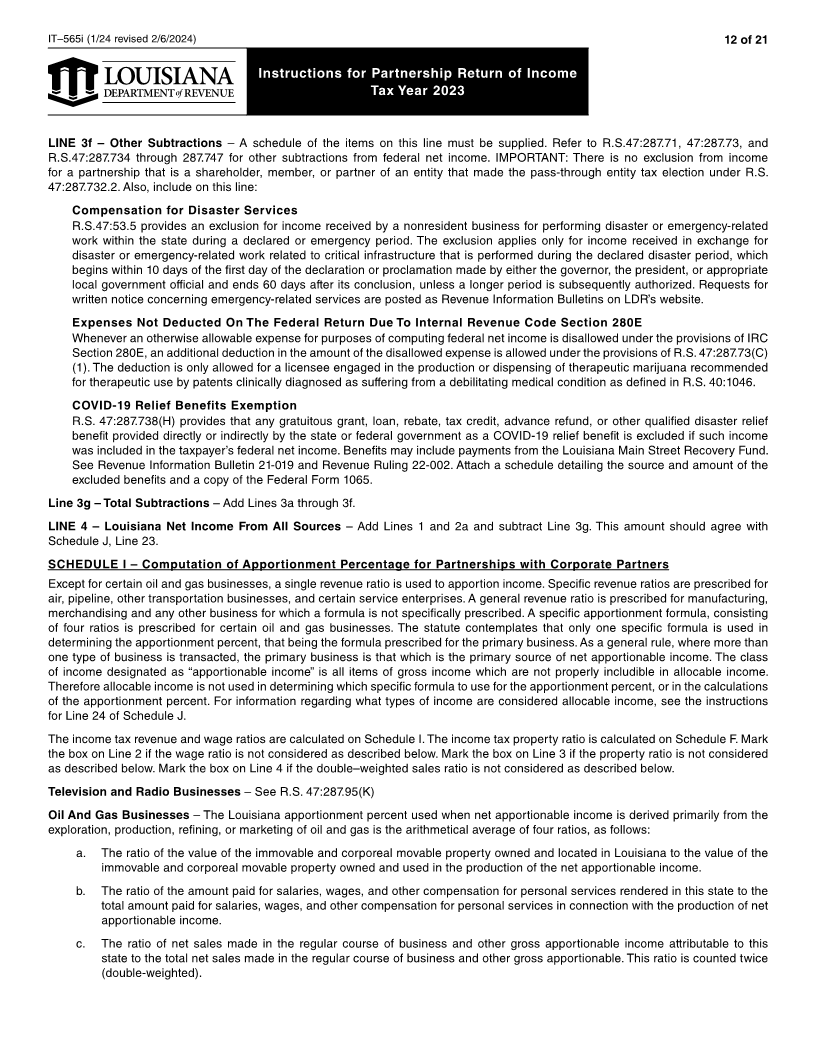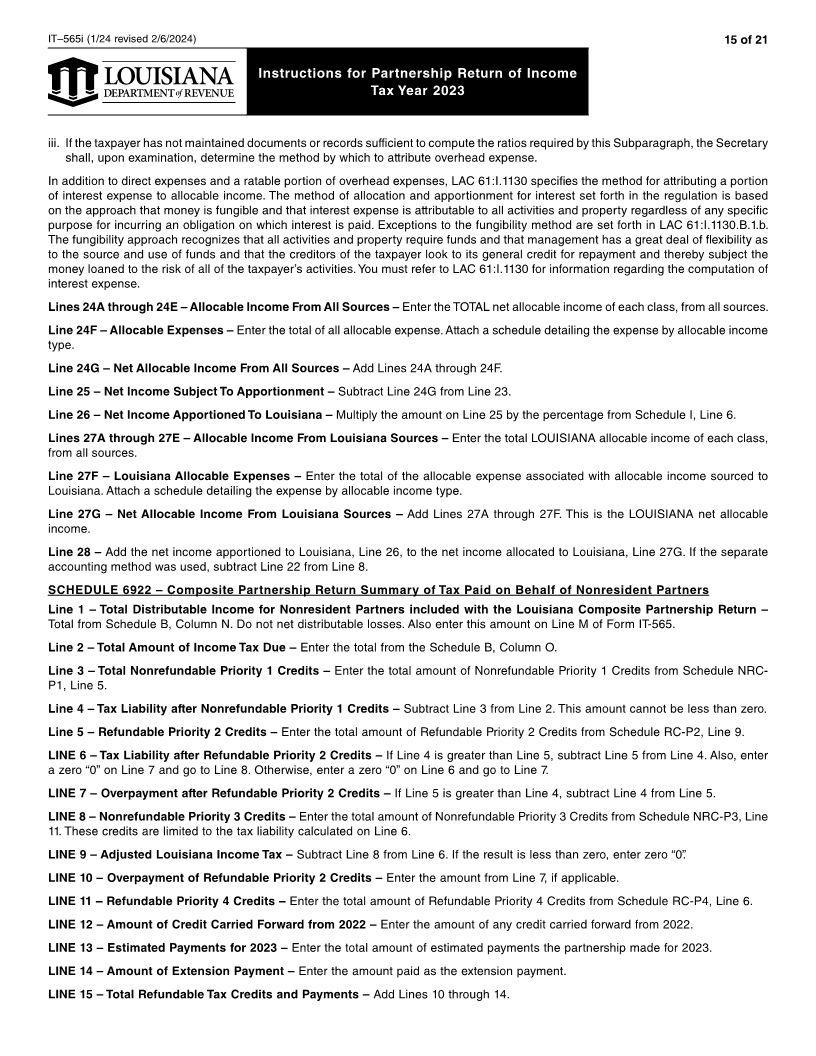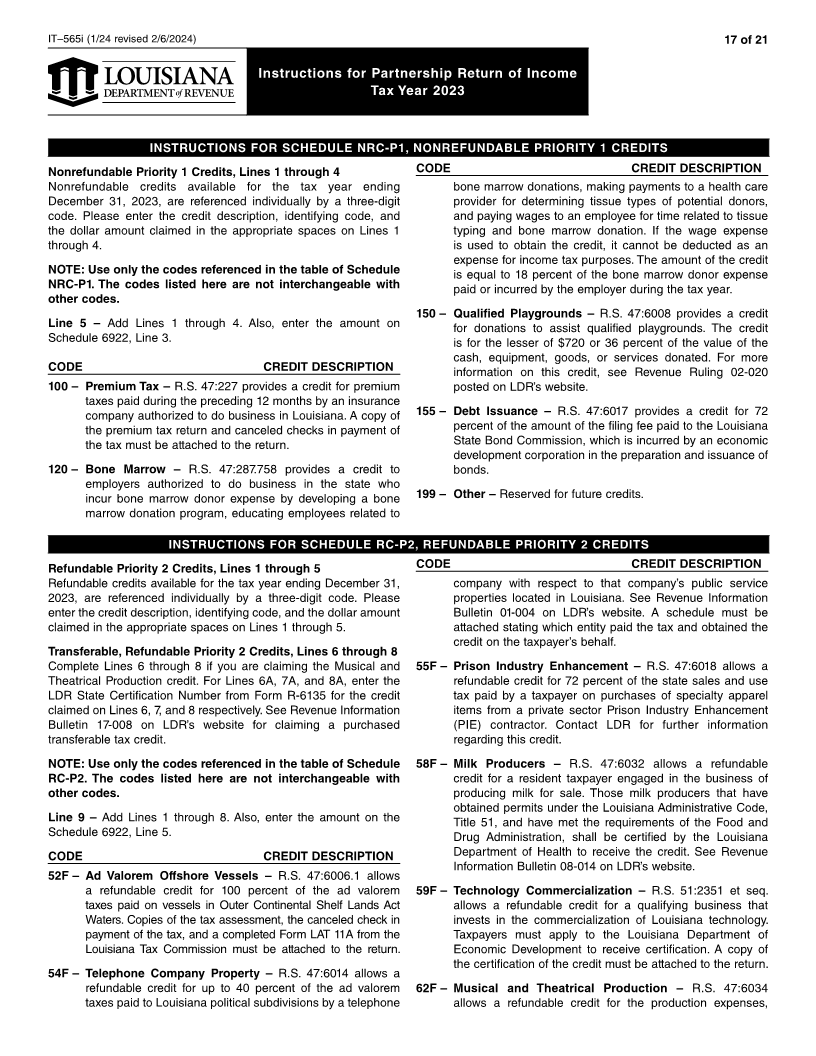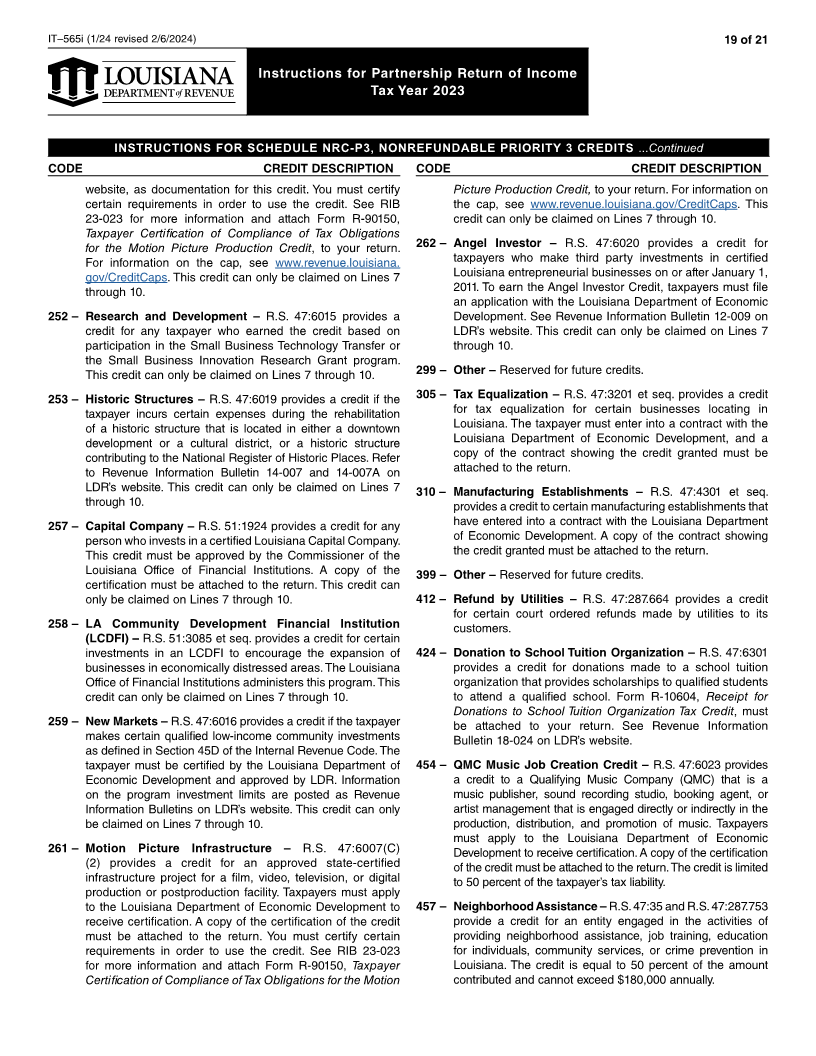
Enlarge image
IT–565i (1/24 revised 2/6/2024) 1 of 21
Instructions for Partnership Return of Income
Tax Year 2023
GENERAL INFORMATION
All partnerships doing business in Louisiana or deriving any income from sources therein, must file Form IT-565, Partnership Return
of Income, pursuant to Louisiana Revised Statute (R.S.) 47:201. Revenue Information Bulletin No. 24-008 provides administrative
filing relief for eligible partnerships applicable to tax year 2023 and is effective until it is superseded by the adoption of Louisiana
Administrative Code (LAC) 61:I.1402, which shall govern and be applicable at such time. IT-565 is an informational return and as such,
the partnership is not subject to the income tax imposed.
Nonresident Partners
Partnerships having a nonresident individual as a partner must allocate and apportion their income within and without Louisiana
pursuant to R.S. 47:241 through 247, and the share of any nonresident partner in the net income from Louisiana sources, so computed,
must be allocated to Louisiana in the return of the nonresident partner.
A nonresident member of a partnership who does not have a valid agreement on file with Louisiana Department of Revenue (LDR)
must be included on Schedule B, Included Partner’s Share of Income and Tax, and their income reported on Schedule 6922, Louisiana
Composite Partnership Return.
Nonresident partners who have a valid agreement or who have other income derived from Louisiana sources, must be listed on
Schedule A, NOT Included Partner’s Share of Income and Tax, and must include all income derived from Louisiana sources on Form
IT-540B.
Fiduciary Partners
Partnerships having a nonresident estate or trust as a partner must allocate and apportion their income within and without Louisiana
pursuant to R.S. 47:241 through 247, and the share of any nonresident estate or trust partner in the net income from Louisiana sources,
so computed, must be allocated to Louisiana in the return of the nonresident estate or trust partner.
Corporate Partners
Partnerships having a corporation as a partner must allocate and apportion their income within and without Louisiana in accordance
with the formulas and processes prescribed for corporations (R.S. 47:287.2 et seq.) and the share of any corporate partner in the net
income from Louisiana sources, so computed, must be allocated to Louisiana in the return of the corporate partner.
Different Computations for Corporate and Non–Corporate Partners
Because a partnership must compute its income from Louisiana sources differently when it has corporate partners from when it has
non–corporate partners, this return provides schedules for both computations. Schedules D, E, and G must be used to compute the
income for non-corporate partners. Schedules H, I, and J must be used to compute the income for corporate partners. Examples of a
non–corporate partner are individuals, estates, trusts, and partnerships.
Electronic Filing Mandate
Louisiana Administrative Code 61:III.1507 requires the electronic filing of the partnership return if the total assets of the partnership
have an absolute value equal to or greater than $250,000.
Revised Statute 47:201.1(F)(4) requires the electronic filing of any return containing Schedule 6922.
When and where the return must be filed
Returns for a calendar year must be filed with the Department of Revenue, P.O. Box 3440, Baton Rouge, LA 70821–3440, on or before
May 15 of the year following the close of the calendar year. Returns for fiscal years must be filed on or before the 15th day of the fifth
month after the close of the fiscal period. If the due date falls on a weekend or legal holiday, the return is due on the next business day.
Extensions
If you know you cannot file your return by the due date, you do not need to file for an extension. You will automatically be granted an
extension of six months to November 15, 2024.
Important: An extension does not relieve you of your obligation to pay all tax amounts due by the original due date. If you
anticipate that you will owe additional tax on your return, then you should submit your payment with a payment voucher (Form R-6467V)
by May 15, 2024. An extension means only that you will not be assessed a delinquent filing penalty for filing your return after the due
date but before the extended due date. Interest on the additional tax due from the due date of the return and any penalties will be
assessed if applicable. If you file your return after the extended due date, you will be assessed delinquent filing penalty from the original
due date of the return. NOTE: No paper or electronic extension form needs to be filed to obtain the automatic extension.
Pass-through entity tax election
Revised Statute 47:287.732.2 allows Subchapter S Corporations, and other flow-through entities taxed as partnerships for federal
income tax purposes, to elect to pay Louisiana income tax at the entity level. An individual, estate, or trust who is a shareholder,
member, or partner of the entity is allowed to exclude the income taxed at the entity level that is included in their federal adjusted gross
income or federal taxable income, respectively. Once the election is made, it is effective for the entire taxable year for which it was made
as well as all subsequent taxable years until the election is terminated.



















